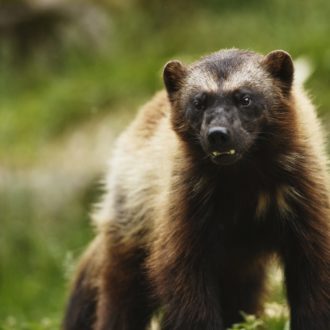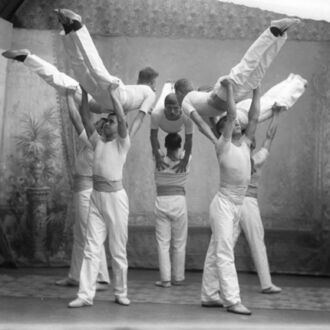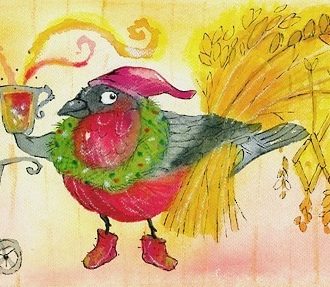Wolf Pack, Lions, Eagle-Owls and Boreal Owls. Naming sports teams after animals is a long-standing tradition in Finland, and not just for local clubs, but for the national teams, too.
These names reflect the spirit of sports: power, agility, teamwork and cleverness. But beyond that, they help build a strong fan culture and sense of community. After all, who wouldn’t want to call themself a supporter of the Wolf Pack?
For the players, too, these names can carry a real meaning. There’s something empowering about being associated with a predator. Just imagine being one of the Lynxes (ilves in Finnish – an ice hockey team in the central-western city of Tampere), the Bears (karhu – a basketball team in the western town of Kauhajoki) or the Tigers (tiikeri – a volleyball team in the west-coast town of Kokkola).
Let’s take a closer look at some of Finland’s most iconic animal-themed national teams.
Susijengi: The Wolf Pack (men’s basketball)
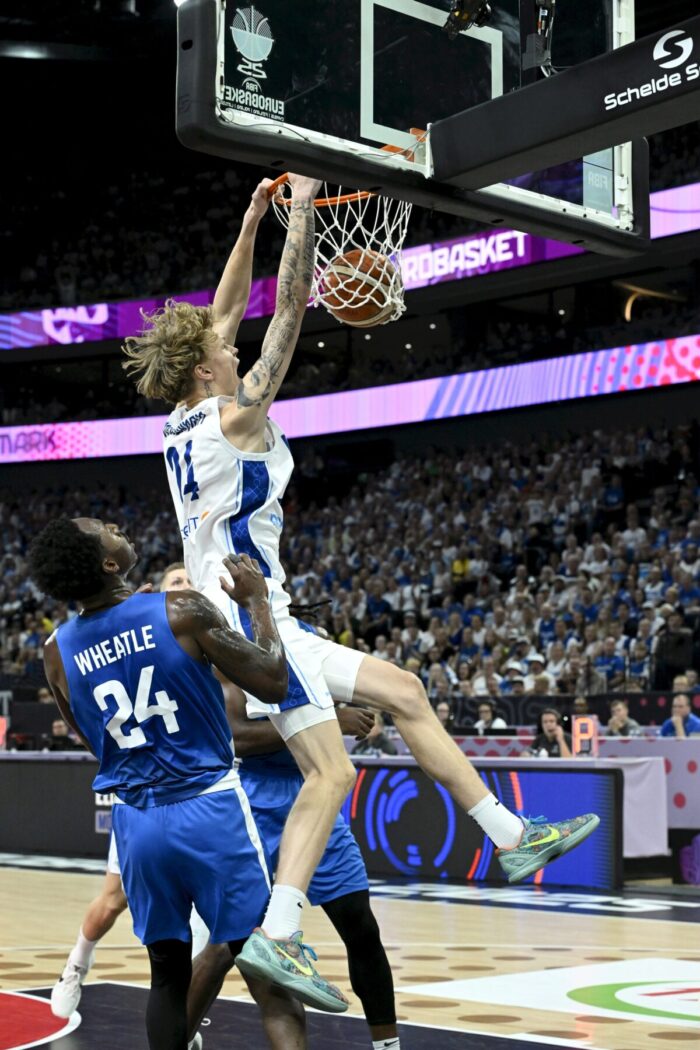
Miikka Muurinen (dunking the ball) is one of Finland’s young basketball talents. Photo: Heikki Saukkomaa/Lehtikuva
The Finnish men’s basketball team, known for their historic performance in the European Championships in 2025, is aptly called Susijengi (the Wolf Pack). The name, coined by the Finnish Basketball Association, symbolises strength in numbers: wolves are already fast and fierce on their own, but they’re unstoppable in a pack.
And yes, fans and players have been known to howl in celebration!
Leijonat: The Lions (men’s ice hockey)

Lions captain Valtteri Filppula celebrates after Finland won the 2022 Ice Hockey World Championship. Photo: Jussi Nukari/Lehtikuva
The men’s ice hockey team gets its name from the lion featured in Finland’s national coat of arms. They first wore jerseys bearing a lion emblem in 1948.
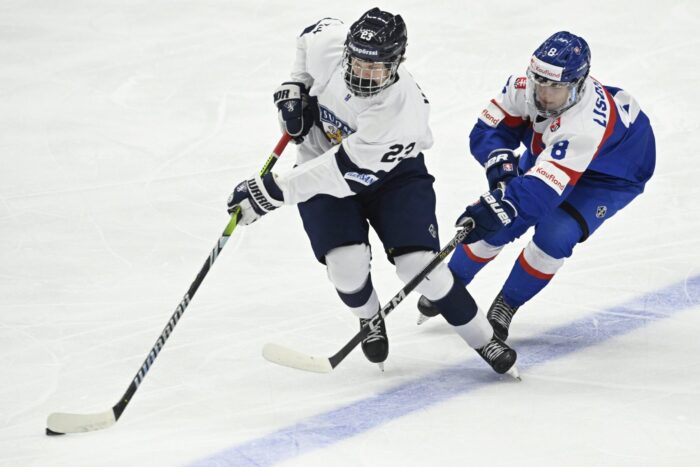
Finnish hockey player Ville Väärälä (left) has made his mark as one of the Little Lions, the junior national team. Photo: Antti Aimo-Koivisto/Lehtikuva
Several other national hockey squads have their own nicknames, including Naarasleijonat (the Lionesses – the women’s national team) and Pikkuleijonat (the Little Lions – the junior national team).
Huuhkajat: The Eagle-Owls (men’s football)

Striker Joel Pohjanpalo has been one of the mainstays of the Finnish national football team for years. Photo: Markku Ulander/Lehtikuva
In 2007, a UEFA qualifying match between Finland and Belgium was memorably interrupted by a wild eagle-owl, later dubbed Bubi, who flew across the pitch mid-game and perched on one of the goals. The owl stole the show and provided the team with its nickname, the Eagle-Owls.
The under-21 men’s team followed suit, becoming known as Pikkuhuuhkajat (the Little-Eagle Owls).
Helmarit: The Boreal Owls (women’s football)

Linda Sällström has been chosen as a female footballer of the year three times by the Football Association of Finland.Photo: Emmi Korhonen/Lehtikuva
Following the popularity of the Eagle-Owls moniker, Finland’s morning TV viewers were invited to suggest a name for the women’s national football team. The winning idea, Helmarit, is short for helmipöllöt, or boreal owls, a native Finnish species known for its sharp vision and determination.
Finland’s love of animal nicknames doesn’t end there.
The national bandy team (an ice-hockey-like sport played on an ice surface as big as a football field) goes by Jalopeurat (Noble Deer), and ski jumpers are often called mäkikotkat (eagles of the hills).
When the Wolf Pack steps onto the basketball court again, the crowd is ready to howl.
By Emilia Kangasluoma, September 2025
